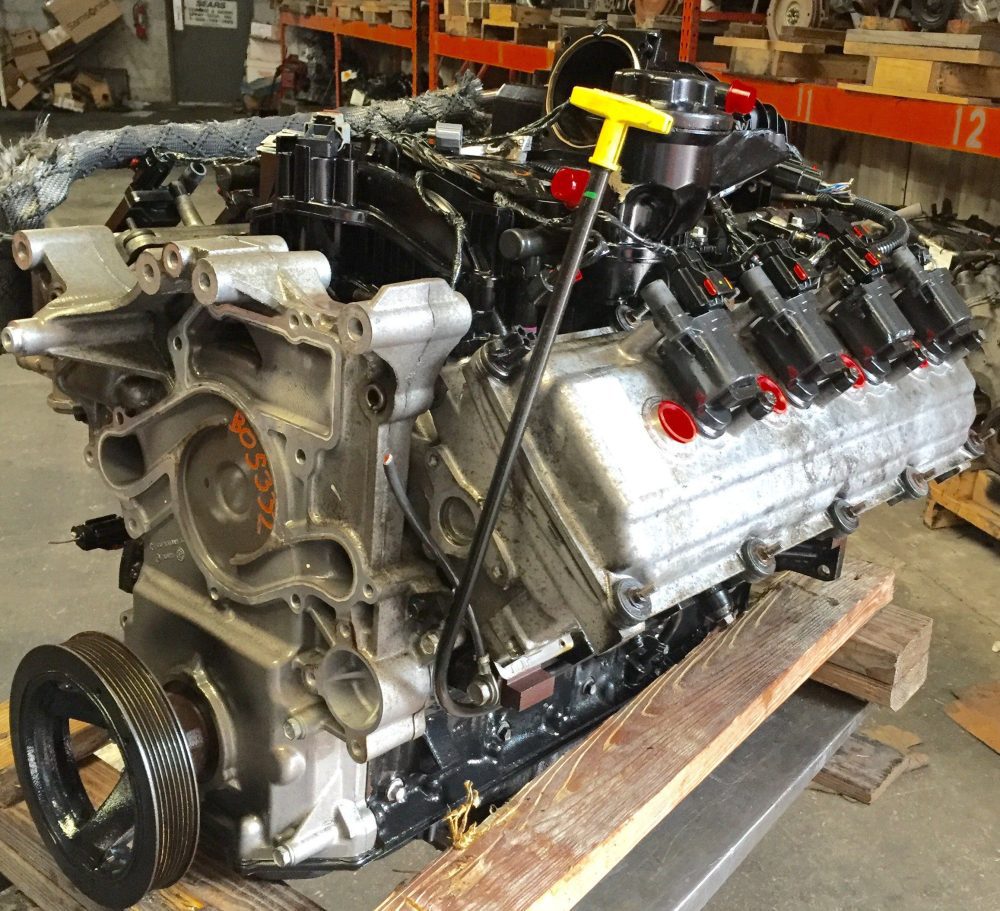Do you know about 5.7 hemi problems, if you want to know more about it; you can read this article or you can take help from google.
Dodge ram 1500 engine a pickup truck that displays all of the traits you want in a top notch ride. Your dodge ram is strong, dependable and capable of towing and hauling any job you need done. Its performance continues to be reliable by investing in a new dodge ram engine from autozone today. Engine details the innovative available 3.0L EcoDiesel V6 engine began with a block of compacted graphite iron and aluminum twin cam heads.
Which engine will fit your needs the best?
Then we added b20 biodiesel capability and active air grille shutters. The result is a remarkably quiet, incredibly capable and efficient workhorse. The 2020 ram 1500 comes standard with a highly capable 3.6L Pentastar V6 engine. But what other engine options are there? This ram gives you the option to upgrade to the engine of your choice. So you can choose which engine will fit your needs the best.
The base engine choice in the ram 1500 is a 3.6 liter V6 with 24 valves, variable valve timing, and FCA’s eTorque 48-volt mild hybrid system. This base mill generates 305 horsepower and 269 lb ft. A Cummins b series engine was also added to the engine lineup in 1989. For the first time, dodge saw sales increase. The Cummins was coupled with a heavier duty version of the A727 automatic or a 5 speed manual transmission. This is available on 250 and 350 pickups and pickup based chassis cab trucks. This diesel engine option was different from the optional diesels in ford and gm trucks.
Dodge Ram Pickup Engine Problems
Dodge Ram engines, in particular the 5.7-liter Hemi engine and the 6.7-liter Cummins diesel engine, are robust and durable engines that typically meet the demands of demanding use. The 4.7-liter PowerTech V-8 engine, however, has earned mixed opinions since its debut in 1999. The reason is due to times when the engine has failed catastrophically. Most of its failures are due to a lack of scheduled maintenance.
Background
The 5.7-liter Hemi V-8 engine was released in 2004 and Cummins diesel engines have been a feature in Dodge trucks since 1989. Dodge trucks now feature the 5.9 and 6.7-liter Cummins in-line six-cylinder diesel engines. The 4.7-liter aluminum engine was first introduced in the 1999 Jeep Grand Cherokee. That was followed by the Dakota and Ram pickup trucks and the Durango SUV, according to allpar.com.
4.7-liter engine failures
The 4.7-liter engine may experience failure after 70,000 miles (112,654.08 km) due to poor maintenance. The failures can also be due to some versions of the 4.7-liter engine with block walls that are thinner than normal. These poorly constructed walls cause overheating, which over time leads to the generation of oil residue and cracked heads, according to my3cents.com.
Live and die
Drivers often experience times when the truck drives well, but will suddenly stall on the road and will not start. After a long rest, the engine is likely to start, only to shut off again after a few miles. The problem may be due to a faulty fuel pump.
Residual problems
Oil residue is a common problem with the 4.7-liter engine, typically caused by a faulty positive ventilation valve in the crankcase. Changing the valve and using high-mileage oil can help solve the problem.
Ignition time
The diesel effect, in which the engine continues to run and knock after being shut down, is an annoying problem. But it can be fixed without spending too much. This can be done by checking the ignition timing, idle, and cooling system to determine if the engine is about to overheat.
Height changes
Height changes in mountainous regions can affect engine performance. It is not uncommon to see the check engine light come on at levels above 14,000 feet (4267.2 m). Manifold absolute pressure (MAP) may be temporarily affected and a computer code review will help identify the problem. However, usually the only way to know for sure if the engine is trouble-free is to reset the on-board computer and check the codes, according to 2carpros.com.
Overheating
Any Dodge engine approaching 100,000 miles (160,934.4 km) is in danger of failure if the driver keeps the engine warm for an extended period. Engine temperatures that reach 235 degrees Fahrenheit (112.7 degrees Celsius) on flat terrain and up to 250 degrees Fahrenheit (121.1 degrees Celsius) on hills or pulling a heavy load are the recipe for a head gasket exploding. Planned maintenance of the water pump, thermostat, and radiator will prevent this problem.
Read More: Goodyear Viva 3 Review











































